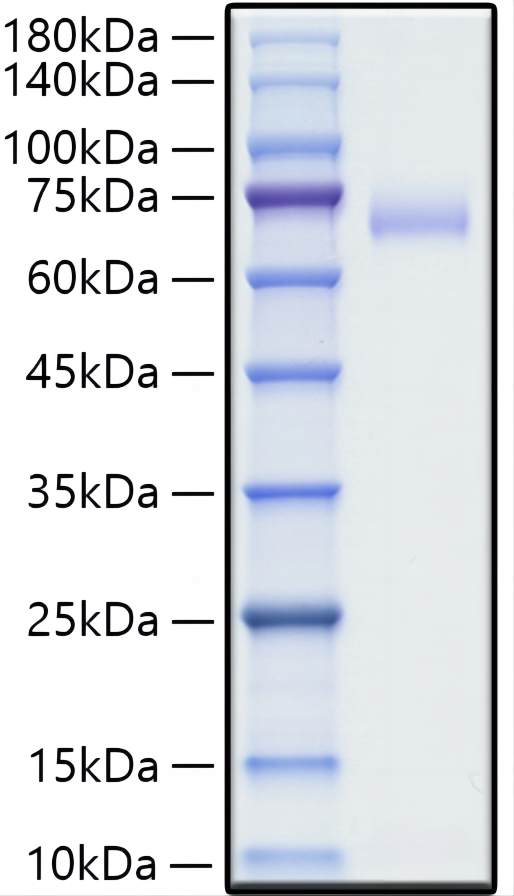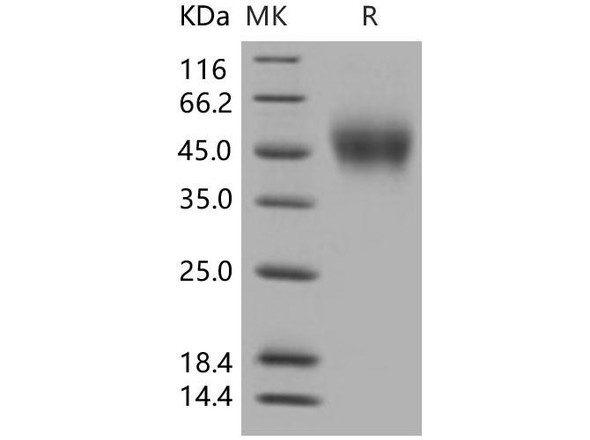Description
Recombinant Human SLAMF1/CD150 Protein
The Recombinant Human SLAMF1/CD150 Protein is a biologically active recombinant protein that plays a significant role in various cellular processes and signaling pathways in human biology. This protein is widely employed in immunological research, cell biology studies, protein-protein interaction analyses, and therapeutic development, providing researchers with a reliable tool for investigating SLAMF1/CD150 function and its implications in health and disease.
This product (SKU: RPCB0521) is produced using HEK293 cells and features a C-hFC tag for convenient detection and purification. The protein exhibits a calculated molecular weight of 50.25 kDa with an observed molecular weight of 70-75 kDa under denaturing conditions, achieving ≥ 95 % as determined by SDS-PAGE., ensuring exceptional quality and consistency for research applications.
Key Features
| High Purity by Affinity Chromatography | |
| Mammalian & Bacterial Expression Systems | |
| High lot-to-lot consistency via strict QC |
| Product Name: | Recombinant Human SLAMF1/CD150 Protein |
| SKU: | RPCB0521 |
| Size: | 10 μg , 20 μg , 50 μg , 100 μg |
| Reactivity: | Human |
| Synonyms: | SLAMF1, CD150, CDw150, SLAM |
| Tag: | C-hFC |
| Expression Host: | HEK293 cells |
| Calculated MW: | 50.25 kDa |
| Observed MW: | 70-75 kDa |
| Gene ID: | 6504 |
| Protein Description: | High quality, high purity and low endotoxin recombinant Recombinant Human SLAMF1/CD150 Protein (RPCB0521), tested reactivity in HEK293 cells and has been validated in SDS-PAGE.100% guaranteed. |
| Endotoxin: | < 1 EU/μg of the protein by LAL method. |
| Purity: | ≥ 95 % as determined by SDS-PAGE. |
| Formulation: | Lyophilized from a 0.2 μm filtered solution of PBS, pH 7.4.Contact us for customized product form or formulation. |
| Reconstitution: | Reconstitute to a concentration of 0.1-0.5 mg/mL in sterile distilled water. |
| Storage: | Store at -20℃.Store the lyophilized protein at -20℃ to -80 ℃ up to 1 year from the date of receipt. After reconstitution, the protein solution is stable at -20℃ for 3 months, at 2-8℃ for up to 1 week. |
SLAM-induced signal-transduction events in T-lymphocytes are different from those in B-cells. Two modes ofSLAM signaling are likely to exist: one in which the inhibitor SH2D1A acts as a negative regulator and another inwhich protein-tyrosine phosphatase 2C (PTPN11)-dependent signal transduction operates.







